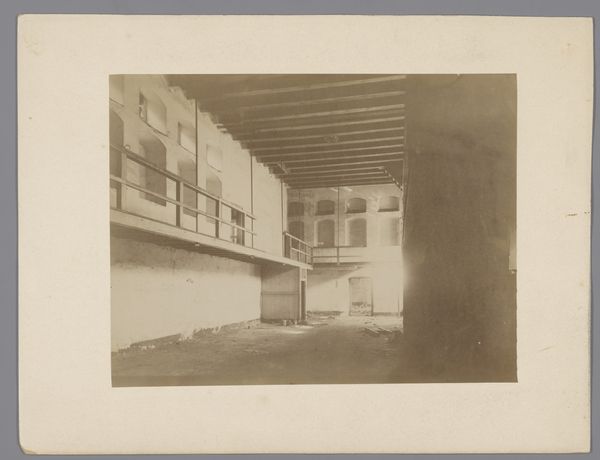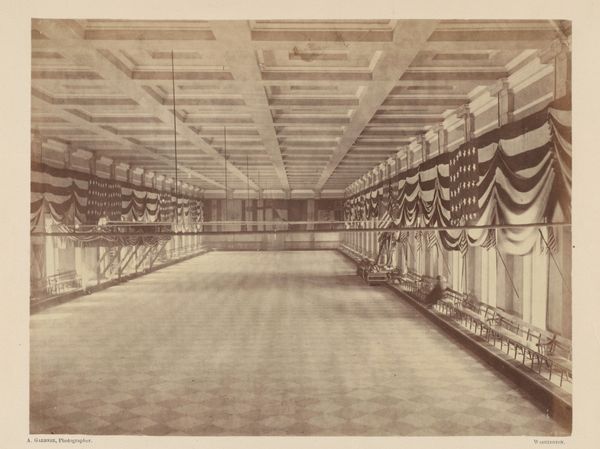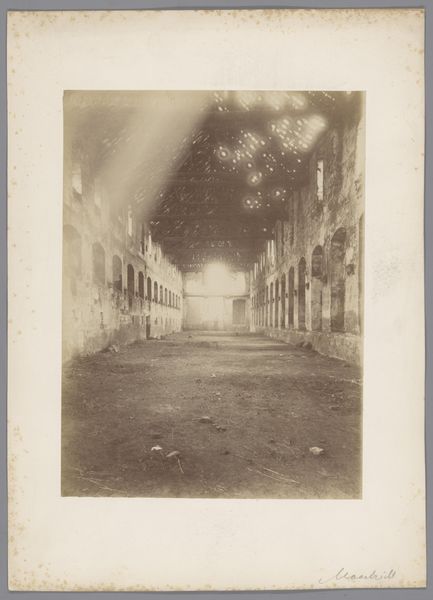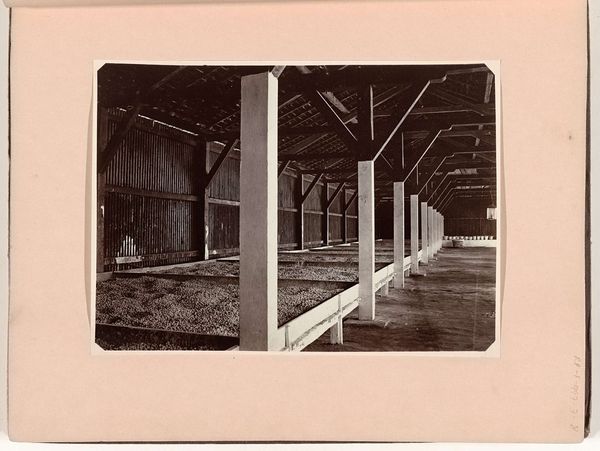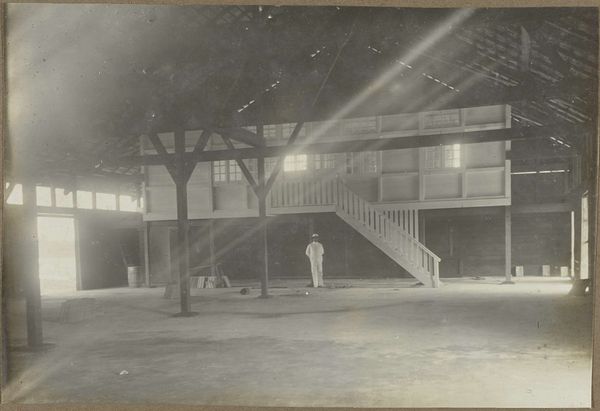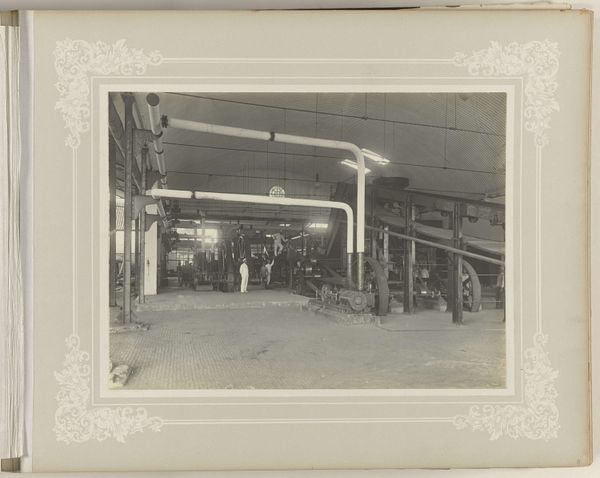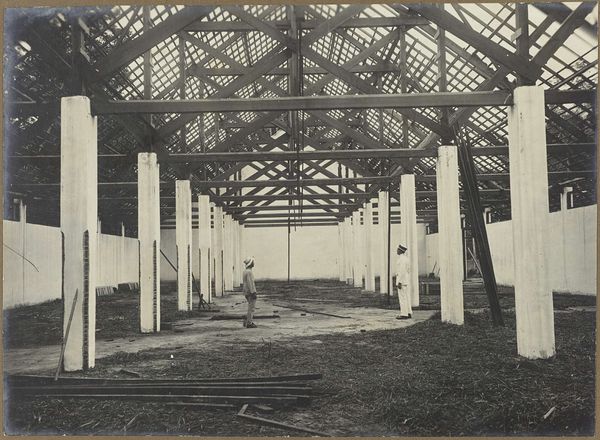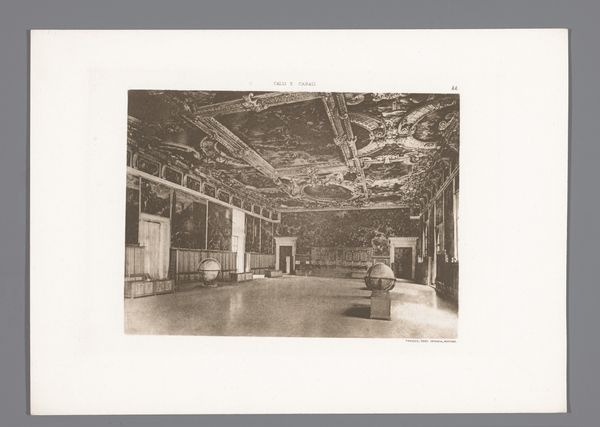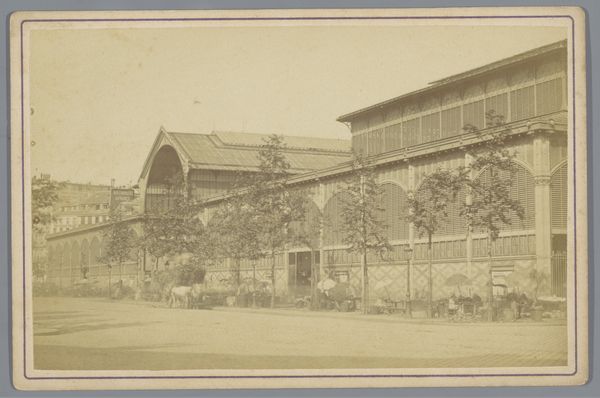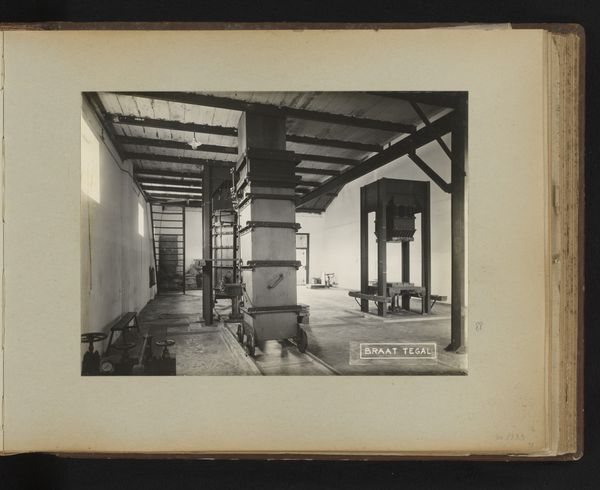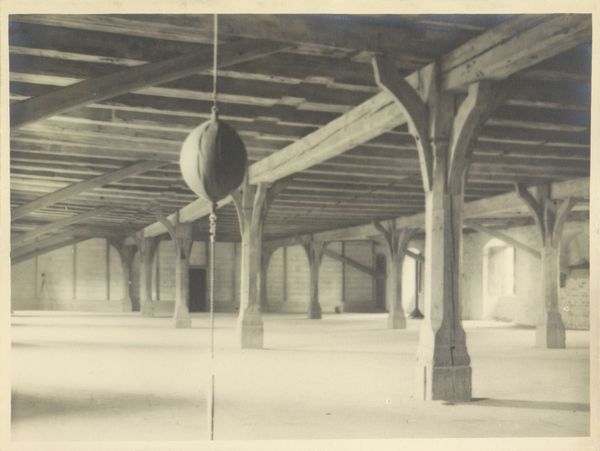
Dimensions: height 65 mm, width 105 mm
Copyright: Rijks Museum: Open Domain
Curator: This is a fascinating gelatin-silver print dating from 1880 to 1890, entitled "Interieur van de Consiliezaal in Konstanz, Duitsland," by G. Wolf. What are your initial thoughts? Editor: Stark, isn't it? It feels like a stage set awaiting actors, heavy with a history we can only guess at. The light, though muted, seems strategically placed. Curator: Absolutely. Considering the period, this is a study in architectural materiality captured through the then relatively recent photographic process. The texture of the wooden beams above and the craftsmanship involved are on full display. We see the physical infrastructure of decision-making laid bare. Editor: And decisions made by whom, precisely? Look at the symmetry, the imposing columns, the almost oppressive horizontal lines of the ceiling. It speaks to power, to a regulated space of discussion – likely excluding many. I see gendered implications, class divisions... Whose voices were heard in this room? Whose were silenced? Curator: A crucial point. The Consiliezaal, or Council Chamber, implies specific actors and their socio-political standing within the German Empire at that time. Photography as a medium also becomes interesting; access to both it and the space depicted would have been limited. It becomes another layer of exclusive visual documentation. Editor: Exactly. And note how the perspective almost forces us, the viewers, into a submissive position. The vanishing point draws our eye down the long hall, reinforcing the institutional authority inherent in the space itself. Even these seemingly innocuous benches against the wall feel staged to marginalize anyone sitting on them. Curator: Perhaps. However, consider the craftsmanship again – the detail afforded to the architecture suggests not just functionality but also a desire for lasting symbolic representation, even propaganda. How the space was intended to influence discourse and establish power dynamics cannot be overlooked, but photography here also memorializes. Editor: I concede that point about memorialization. The photographer, even with his implicit biases, is documenting a particular moment, a physical manifestation of authority that we can now analyze and critique. It is evidence, however filtered, and that in itself is a powerful act of preservation. Curator: Agreed. The photograph exists as both artifact and documentation of an earlier means and mode of spatialized production of a German hall and social moment. Editor: Seeing how artistic practice intertwines with identity, politics and social spaces allows us, still today, to draw lines of resistance or build spaces that encourage inclusivity.
Comments
No comments
Be the first to comment and join the conversation on the ultimate creative platform.
